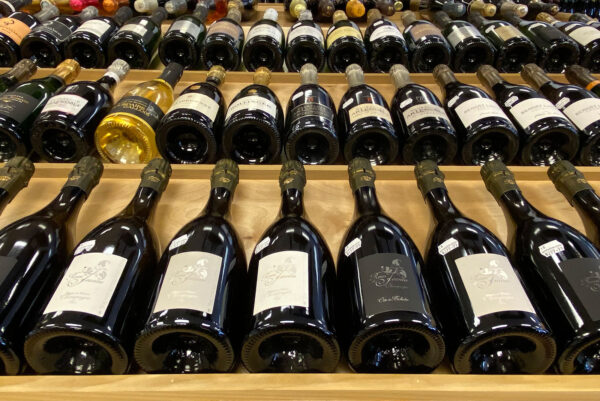This column is written by the team at Arrowine & Cheese (4508 Cherry Hill Road). Sign up for the email newsletter and receive exclusive discounts and offers. Order from Arrowine’s expanding online store for curbside pickup or in-store shopping. Have a question? Email thenose@
Hello again, it’s your favorite neighborhood wine merchant, Doug Rosen.
In my previous article, I stated there was one simple thing you can do that is guaranteed to heighten your enjoyment of drinking wine (or anything else)! And it’s easy.
Rule number one: thoroughly wash your glass with soap and water before using it! Why is it so important?
The culprit is the sealants used to protect every kitchen cabinet’s interior. For example, suppose you take a glass from your kitchen cabinet without the critical step of first washing your glass thoroughly before using it. In that case, you unknowingly add the flavors and aromas of your cabinets to whatever you pour into them. Allow me to prove my point.
Grab two glasses from your kitchen cabinet, take a whiff and you will immediately see what I mean. Wash only one glass thoroughly with soap and water until it smells like fresh tap water. If the glass has been in the cabinet for a prolonged period, it might take as many as five washings to get the funk out. Make the extra effort to get the glass to a pristine state. Don’t worry about chlorinated water; the wine will pour right over it. And no, using wine instead of water doesn’t work! The sealants are “water soluble” and formulated to bond with water, not wine.
Next, grab a bottle of wine you know to heighten the drama, open your libation and pour about an inch of it into each glass. Swirl, take in the aromas and then taste. I just rocked your world, didn’t I?
The culprit is the micro-particles of the sealants. I’m not a scientist, but this is how it was explained: Wood breathes, as we already know. That’s why wine is aged in barrels, not to season with the wood, like adding salt or pepper to your food but to allow the wine to experience micro-oxidation. This mico-oxidation softens the tannins, making the wine less raspy and smoother on the palate.
The respiration inside your kitchen cabinets allows microparticles of the sealants to fall into your glasses. They stick to the surface like glue, causing the glass to smell like your kitchen cabinet and impact the flavor of the wine. Now your wine smells and tastes like the cabinet! Yuck and double yuck.
Try this experiment at home and report back. I already know how it will go, and you can thank me later.
Rule number two, expect a wine to be shy within 24 hours of a storm, rain or snow, or turbulent weather. Like Willard Scott, I can tell if we will get any precipitation within 24 hours just by tasting wine. I have fascinated multitudes with my accuracy; it’s no parlor trick.
When a storm front approaches, a wine will close up or shut down, making the wine “less fruity” and much less enjoyable. Luckily there is a 1/2 remedy; open a bottle of 14.5% plus alcohol, or better still, a sparkling wine. Those wines are less affected; they will still be shy, but if you’re having a dinner party before a storm, you have an alternative, albeit an imperfect one.
My business partner Shem Hassen and I were in Issy-Les-Moulineaux, a suburb of Paris, to attend a tasting of 140 wines — we only had that day. We began the tasting with the tenth wine; we looked at each other and asked ourselves, “when is it supposed to start raining?” So we had four hours to kill.
We walked into a nearby Armenian Cemetery, looked at the tombstones, and paid our respects until the rain started. When we returned to the tasting, the wines had opened and tasted as expected. True story.
Cheers,
Doug Rosen



